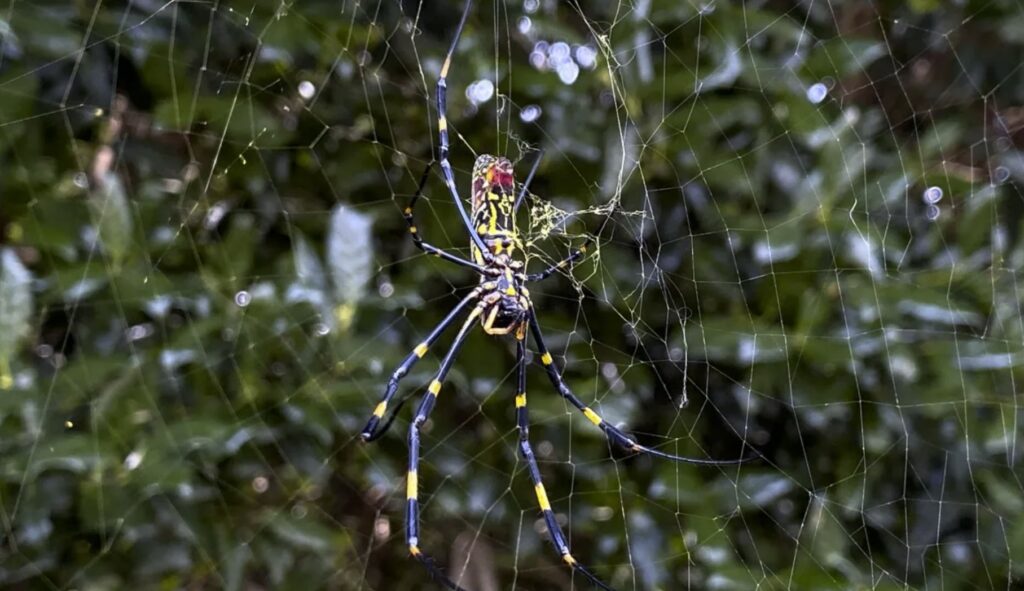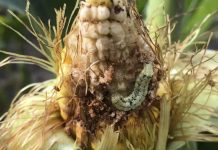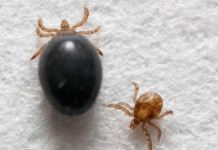Joro spiders have already spread across several states, and the species’ range is expected to keep expanding to new ones…

Giant, yellow, non-native spiders that can travel through the air may be coming to your state – if they’re not already there.
The first report of a Joro spider in the United States was around a decade ago in northern Georgia. But a recent peer-reviewed study conducted by David Coyle, a scientist and assistant professor in the Department of Forestry and Environmental Conservation at Clemson University, found that the species is “here to stay” in the U.S. as it spreads rapidly around the country.
As of October 2022, the species’ range spanned at least 120,000 square kilometers across Georgia, South Carolina, North Carolina and Tennessee, according to the study. There were also reports of Joro spiders in Alabama, Maryland, Oklahoma and West Virginia. And the spiders are expected to make more East Coast states their home in the future.
“(The data from the study shows) that this spider is going to be able to inhabit most of the eastern U.S.,” Coyle said. “It shows that their comfort area in their native range matches up very well with much of North America.
“Barring some unforeseen circumstance, we expect the range of these things to continue expanding, likely to the north, and we’ve already seen that with some populations in Maryland.”
Below learn more about tese Joro spiders:
Hey guys, it’s time to wake up!
If a few more people choose to support my work, I could expose more lies, root out more corruption, and call out more hypocrites. So, if you can afford it, please support my endeavor by either using PAYPAL or DonorBox (PAYPAL & Credit Cards / Debit Cards accepted)…
Joro spiders are relatively harmless to people but can push out native species. Here’s what to know:
How did Joro spiders get to Georgia?
Joro spiders, also known as “Trichonephila clavata,” are native to East Asia. It’s believed the species likely made its way to the U.S. via a shipping container.
How big are Joro spiders?
Joro spiders can measure up to around 3 inches wide with their legs spread. They have a yellow and gray abdomen.
Are Joro spiders orb-weavers?
Joro spiders are in the family of orb-weavers, which spin large, orb-shaped webs. They look similar to garden spiders and banana spiders.
Do Joro spiders fly?
The pattern in which Joro spiders have spread “suggests it is primarily driven by natural dispersal mechanisms, such as ballooning,” according to the study. Ballooning is when spiders move through the air like a parachute by releasing “sail-like trails of silk that lift them up and off into the wind,” per National Geographic.
The study said human-mediated transport can’t be discounted, either, in regard to the spread of the species.
Are Joro spiders dangerous?
While Joro spiders may appear frightening to some, they are relatively harmless to people and pets, a University of Georgia study from earlier this year said. In fact, that study found that Joro spiders may be the shyest spider ever documented.
The spiders will only bite if they’re cornered and even then their fangs likely wouldn’t be large enough to pierce human skin, according to the University of Georgia study.
Another positive about the spiders: they don’t want to go inside homes, according to Coyle. They will instead spin webs on the outside of houses or other structures. If a Joro spider needs to be moved, Coyle suggests using a broom or stick to place it elsewhere.
What do Joro spiders eat?
Joro spiders aren’t exactly picky eaters. Coyle said they “don’t seem to care what gets in their web.”
“They’re just as likely to eat brown marmorated stink bugs as they are to eat a Monarch butterfly,” he added. “To say they’re more beneficial than another spider is just simply wrong — they’re a spider — and if something gets caught in their web, it’s going to get eaten. And they don’t care if it’s a rare native pollinator and there are only a few of them left in the world or if it’s a brown marmorated stink bug.”
An interesting find from Coyle’s study is that Joro spiders are displacing native species, along with having other negative impacts. But it’s unclear exactly why other species are being negatively impacted by Joro spiders.
“These are not just benign spiders coming to catch and kill bad things; these are pushing out native species and catching and killing whatever happens to get in their webs,” Coyle said. “Are they bad or good? It’s very nuanced depending on your perspective.”
Of course they are bad! It’s an invasive species from East Asia, killing the US native species. They completely destabilize the already fragile insect ecosystem. We should get rid of them…
Hey guys, it’s time to wake up!
If a few more people choose to support my work, I could expose more lies, root out more corruption, and call out more hypocrites. So, if you can afford it, please support my endeavor by either using PAYPAL or the DonorBox below (PAYPAL & Credit Cards / Debit Cards accepted)…
If you are a crypto fanatic, I do now accept crypto donations:
BTC: 1AjhUJM6cy8yr2UrT67iGYWLQNmhr3cHef (Network: Bitcoin) USDT: 0x490fe5d79d044a11c66c013e5b71305af0a76c1b (Network: Etherum ERC20)
You should join my newsletter to get a daily compilation of different breaking news, pictures and videos… YOU WILL LOVE IT!
Thank you,
Manuel













Get a grip.
ALL spiders are GOOD.
Period.
This is a garden spider, I would play with them when I was a kid in THE 70’s. Harmless and native to Missouri. This site is a joke.
If a Joro spider needs to be moved, Coyle suggests using a broom or stick to place it elsewhere. If it is invasive, kill it!